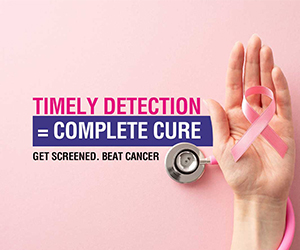Beyond the Basics: How Comprehensive Sex Education Reduces Teen Pregnancy and STI Rates
Explore the research showing how comprehensive sex education significantly reduces teen pregnancy and STI rates through evidence-based approaches that empower adolescents with knowledge and skills.

The statistics tell a compelling story: regions with comprehensive sex education consistently show lower rates of teen pregnancy and sexually transmitted infections compared to areas with abstinence-only or limited sex education programs. Understanding the mechanisms behind these outcomes reveals why evidence-based approaches to sexual health education are so effective.
The Current Landscape of Teen Sexual Health
Despite decades of prevention efforts, teen pregnancy and STI rates remain significant public health concerns. The United States continues to have higher teen pregnancy rates than many developed nations, while STI rates among adolescents have been rising in recent years.
These statistics represent more than numbers—they reflect real impacts on young people's lives, educational opportunities, and long-term health outcomes. Effective prevention strategies are essential for supporting adolescent wellbeing and future success.
How Comprehensive Programs Create Change
Comprehensive sex education reduces negative outcomes through several interconnected mechanisms that address the complex factors influencing adolescent sexual behavior.
Knowledge and understanding form the foundation of behavior change. When young people have accurate information about reproduction, contraception, and STI prevention, they're better equipped to make informed decisions. This knowledge helps dispel myths and misconceptions that can lead to risky behaviors.
Skill development goes beyond information sharing to build practical capabilities. Students learn communication skills for discussing sexual health with partners and healthcare providers. They develop decision-making frameworks for evaluating choices and considering consequences. Negotiation skills help them advocate for their own health and safety in relationships.
Self-efficacy increases when students feel confident in their ability to implement healthy behaviors. Comprehensive programs help students practice scenarios, build confidence in accessing healthcare, and develop the skills needed to use contraception effectively.
Evidence from Research Studies
Multiple systematic reviews and meta-analyses demonstrate the effectiveness of comprehensive sex education in reducing teen pregnancy and STI rates. These studies consistently show that comprehensive programs are more effective than abstinence-only approaches.
A landmark study published in the Journal of Adolescent Health found that teens who received comprehensive sex education were 50% less likely to experience pregnancy compared to those who received abstinence-only education. Similar patterns emerge for STI prevention, with comprehensive programs showing significant protective effects.
International comparisons provide additional evidence. Countries with comprehensive sex education policies, such as the Netherlands and Denmark, have some of the lowest teen pregnancy rates globally. These nations combine comprehensive education with accessible healthcare and cultural acceptance of adolescent sexuality education.
Delayed Sexual Initiation
Contrary to common concerns, comprehensive sex education actually delays the initiation of sexual activity among adolescents. Research consistently shows that students who receive comprehensive programs are more likely to postpone sexual activity compared to those in abstinence-only programs.
This delay occurs because comprehensive programs help students understand the emotional, physical, and social implications of sexual activity. They learn to recognize readiness factors and make deliberate choices about timing based on their own values and circumstances.
Programs also strengthen students' ability to resist peer pressure and make independent decisions. When young people have strong decision-making skills and self-confidence, they're less likely to engage in sexual activity before they feel ready.
Improved Contraceptive Use
When adolescents do become sexually active, those who've received comprehensive sex education are significantly more likely to use contraception consistently and correctly. This improved usage directly translates to lower pregnancy and STI rates.
Comprehensive programs teach about various contraceptive methods, their effectiveness rates, and proper usage techniques. Students learn about dual protection strategies that prevent both pregnancy and STIs simultaneously.
Perhaps most importantly, these programs normalize conversations about contraception and help students develop comfort discussing sexual health with partners and healthcare providers. This communication ability is crucial for successful contraceptive use.
Healthcare Access and Utilization
Comprehensive sex education increases adolescents' likelihood of seeking appropriate healthcare services. Students learn about available resources, how to access care, and what to expect during healthcare visits.
This increased healthcare utilization leads to better STI screening and treatment, improved access to contraception, and earlier intervention for reproductive health concerns. Regular healthcare contact also provides opportunities for ongoing education and support.
Programs often include information about confidentiality laws and adolescents' rights to sexual healthcare, which helps overcome barriers that might otherwise prevent young people from seeking care.
Addressing High-Risk Populations
Comprehensive sex education shows particular effectiveness among populations at higher risk for negative sexual health outcomes. These include young people in foster care, those experiencing homelessness, LGBTQ+ youth, and students in areas with limited healthcare access.
For these populations, comprehensive programs provide essential information and skills that might not be available elsewhere. The programs' emphasis on personal agency and self-advocacy proves especially valuable for youth facing multiple challenges.
Long-Term Impact Beyond Adolescence
The benefits of comprehensive sex education extend well beyond the teenage years. Young adults who received comprehensive programs show better sexual health outcomes throughout their twenties and beyond.
These individuals are more likely to have planned pregnancies when they're ready to start families, maintain better communication in long-term relationships, and continue practicing preventive healthcare behaviors throughout their lives.
Implementation Factors That Matter
Not all comprehensive sex education programs achieve the same results. Research identifies several factors that contribute to program effectiveness in reducing teen pregnancy and STI rates.
Program quality matters significantly. Effective programs are theory-based, implemented by trained educators, and include interactive learning approaches rather than lecture-only formats. They provide adequate time for skill development and practice.
Community support and integration with healthcare services enhance program effectiveness. When schools, families, healthcare providers, and community organizations work together, students receive consistent messages and improved access to resources.

The Economic Argument
Beyond health benefits, comprehensive sex education provides substantial economic returns. Every dollar invested in quality sex education saves multiple dollars in healthcare costs, social services, and lost economic productivity associated with teen pregnancy and STIs.
These economic benefits accrue to individuals, families, and society. Young people who avoid unintended pregnancy and STIs are more likely to complete their education, pursue career goals, and contribute economically to their communities.
Moving Forward with Evidence-Based Approaches
The research evidence clearly demonstrates that comprehensive sex education effectively reduces teen pregnancy and STI rates while supporting positive adolescent development. As communities consider their approaches to sexual health education, this evidence should guide decision-making.
Implementing effective comprehensive programs requires commitment, resources, and community support. However, the substantial benefits to young people's health, education, and future opportunities make this investment essential for supporting thriving communities.











